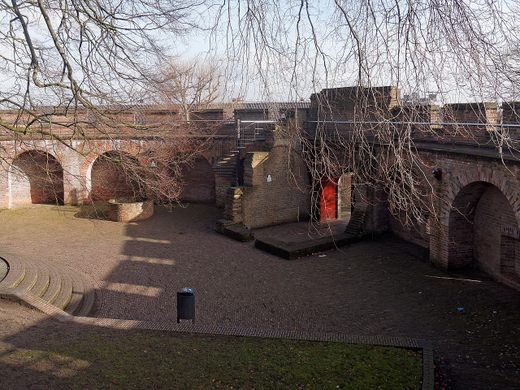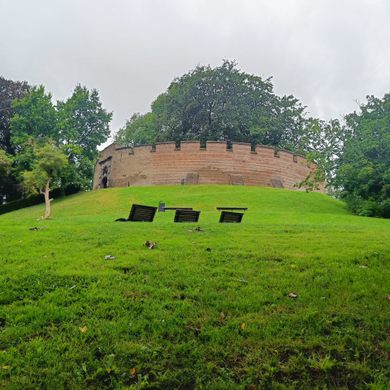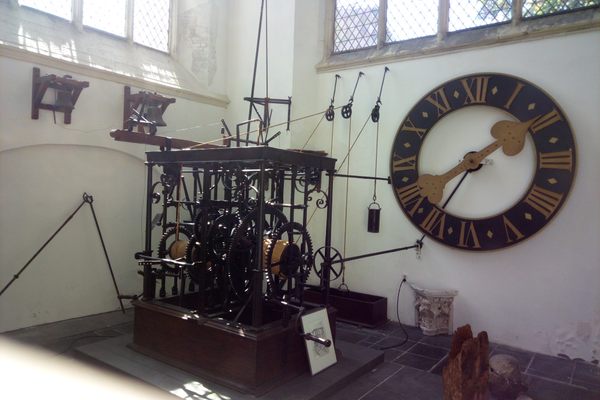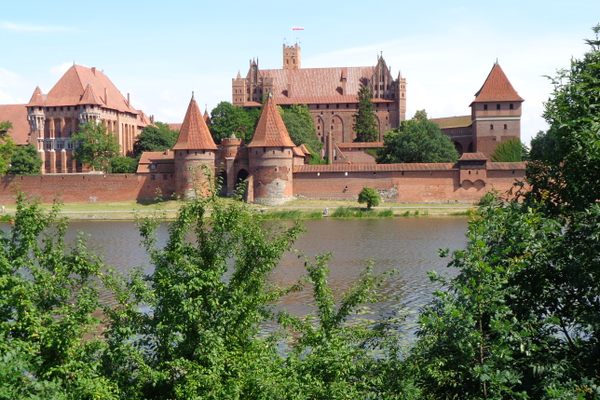Burcht van Leiden
This 11th-century castle sits so low you can't see it behind the surrounding buildings.
Mountains are the ideal place to build a castle, as the difficult access provides security while the elevation offers a good overview of the surrounding terrain. But where to place your defensive fortress if you are in the Netherlands, where most of the land is below sea level?
In the case of the Burcht van Leiden (Castle of Leiden), a shell keep built in the 11th century, the fortress sits on top of a 30-foot motte, or artificial hill, which was built up on a fork of the Rhine River. For about two centuries this fortress was the main defensive structure of the city and home to the burggraaf (viscount). Its thick tuff and brick walls rise about 20 feet high, making this citadel a particularly squat example of a European medieval castle.
Nearly 1,000 years later, the burcht is a well-known Leiden landmark, but notoriously hard to find. Many visitors today have a Disneyesque image in their heads, imagining a tall mountain with a gigantic castle on top of it, towering above the rest of the historical city. The reality couldn’t be further from the truth.
In fact, the burcht can be very easily missed as it is concealed behind some relatively tall buildings that were built around it, making the castle impossible to spot from the ground unless you are standing right at the entrance. Many have walked right past it, leading them to believe the burcht is just an urban legend. But we can assure you that it is there.
In the 13th century, the keep started to become antiquated as a defensive structure, though it still saw action when the Spanish unsuccessfully attempted to seize the city in 1574. In 1651, the city of Leiden purchased the keep and turned it into a public park for the people to enjoy. To this day it is a popular place for local residents to have picnics, enjoy the sun, and take in the lovely view of the city from the top of the castle.
Know Before You Go
Da Burcht (as it is locally known) is accessible free of charge from 8 a.m. to 10 p.m. daily.





















Follow us on Twitter to get the latest on the world's hidden wonders.
Like us on Facebook to get the latest on the world's hidden wonders.
Follow us on Twitter Like us on Facebook